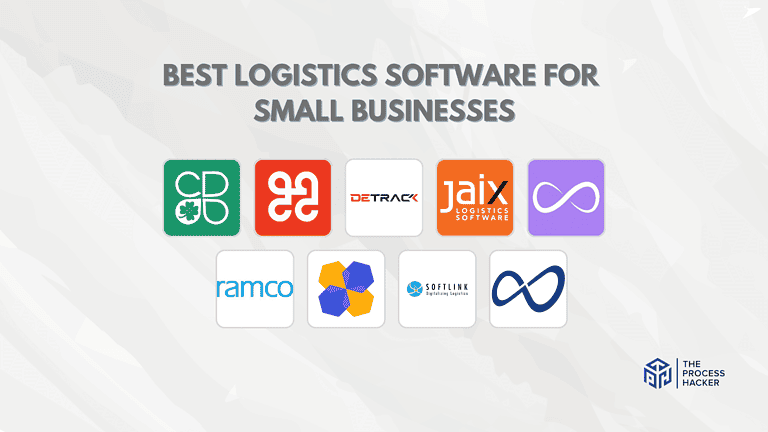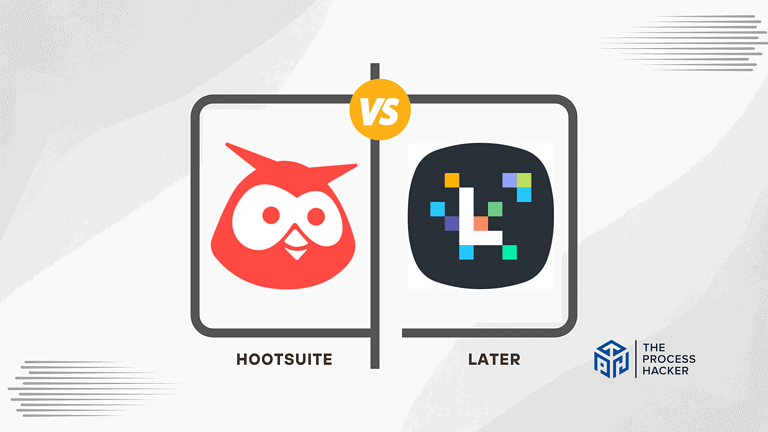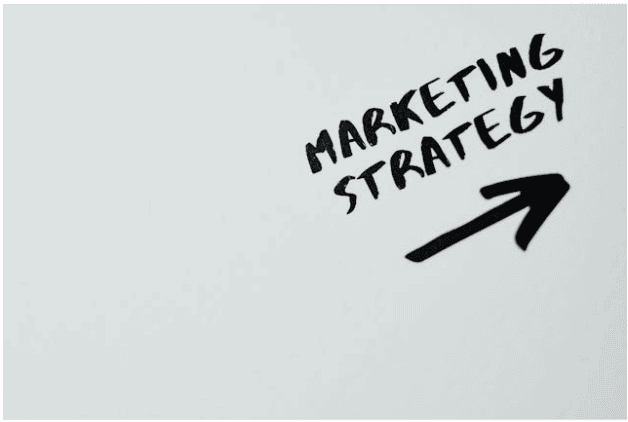How to Design an Ecommerce Website
In the wake of our dynamic digital environment, the number of online transactions is growing annually, a sign of changes in customer behavior and market structures.
The effectiveness of an e-commerce platform, measured by the quality of its design and user appeal, can significantly shape the course of its business. Websites act as digital storefronts and become strong points that shape the shopping process and guide customers’ decisions.
More and more firms have become aware of the values in addition to a beautiful site with a well-defined structure. Shoppers today are now seeking simple and fast checkout, speedy loading, and intuitive navigation.
They are solving these concerns directly by ensuring the building of easy-to-use and great ecommerce sites. Such kinds of strategic investments are the most important ones not only for competing but also for growth embracements of the digital economy.
As a result, the possibility of online depicture is essential, thereby ushering in multiple advantages of the digital marketplace.
What is an Ecommerce Site?
With the internet boom of the last few years, ecommerce has become a household term. But what exactly is an ecommerce site?
Put simply, an e-commerce site is an online platform where businesses and individuals can buy and sell goods and services. These sites can range from small mom-and-pop shops to large multinational corporations, but they all have one thing in common: the ability to conduct transactions online.
With the rise of ecommerce platforms like Amazon and Shopify, it’s easier than ever for anyone to start their own online business and tap into the global market. Whether you’re a buyer or a seller, ecommerce sites offer a convenient and efficient way to connect with customers, purchase products, and grow your business.
Why Your Company Needs Solid Ecommerce Website Design
To run a business in today’s world of digital commerce without ecommerce web development solutions is akin to piloting a ship without a compass. Establishing an online store can determine the business’ success and relevance in the modern world.
Here is a deeper look at why you need to have a digital sales channel to make your business successful:
Increasing Market Capability
An ecommerce store bridges the gap between companies and clients by removing location-specific barriers. Thanks to it, they can trade from physical stores without restrictions at any time, location, or hassle.
This global reach is crucial because it opens up your products and services to an exponentially larger audience. Whether someone is shopping from the comfort of their home in another country or browsing on their mobile device while commuting, your online presence ensures you’re accessible. This accessibility is not just about reaching more people; it’s about tapping into markets you couldn’t otherwise engage with through a physical storefront alone.
Moreover, an ecommerce platform operates 24/7, removing the constraints of traditional store hours. This around-the-clock availability means you can generate sales even when you sleep, turning your business into a non-stop revenue machine. The flexibility this provides is invaluable, both for you and your customers, as it caters to modern shopping habits where convenience is key.
Customizing Experiences for Clients
Online retailers may offer individualized shopping experiences using data analytics to create customized reminders and recommendations. A technology-driven system may be an excellent salesperson, improving revenue and customer satisfaction by making targeted recommendations and encouraging clients to make larger purchases.
Imagine a system that not only recognizes return visitors but also suggests products based on past browsing and purchasing behavior. This kind of personalized interaction isn’t just convenient; it makes shoppers feel understood and valued, which can significantly boost customer loyalty.
Furthermore, through personalized email marketing, you can send customized reminders and offers that resonate with individual preferences and previous interactions with your e-commerce site. This strategy is much more effective than one-size-fits-all campaigns, as it addresses specific needs and desires, making each communication feel relevant and timely.
Additionally, consider implementing features like dynamic pricing, where offers and discounts are adjusted based on user behavior, demand, and other external factors. This level of customization not only enhances the shopping experience but also optimizes your pricing strategy to maximize revenue.
By focusing on these personalized elements, you’re not just selling products; you’re creating an engaging and memorable shopping journey that encourages both initial purchases and repeat business. This tailored approach doesn’t just improve sales—it builds a connection between your brand and your customers, making your ecommerce site a preferred shopping destination.
Strengthening Brand Identity
Custom ecommerce web design is not just about aesthetics; it’s a vital tool for expressing your brand’s unique message and values. This digital presence acts as your brand ambassador in the online marketplace, distinguishing you from competitors and connecting with your audience on a deeper level.
When you tailor your website’s design to align with your brand identity, you ensure that every color, layout, and piece of content resonates with your core values and speaks directly to your target audience. This consistency is key to building trust and recognition. For example, if your brand is all about sustainability, your design can reflect this through natural imagery, green color palettes, and eco-friendly product displays.
A unique design tailored to your brand can make a memorable impression that encourages repeat visits. Consider integrating interactive elements like engaging product videos or immersive VR experiences that reflect your innovative spirit. These elements keep your site dynamic and exciting, captivating new visitors and keeping loyal customers returning.
Additionally, a strong brand identity solidified through your website design helps tell your brand’s story. It’s not just about selling products; it’s about creating an experience that embodies the lifestyle and values your brand promotes. By doing this, you help customers see how your products fit into their own lives, which is invaluable for building emotional connections and enhancing customer loyalty.
Increasing Convenience
Shopping online provides accessibility that can’t be overlooked; users can surf and shop anytime during the day or night with a button click. This is clearly beneficial to the customers, who can be more satisfied and even increase sales.
One of the undeniable advantages of an e-commerce website is the unparalleled convenience it offers. With just a few clicks, you can browse and shop at any hour of the day or night. This around-the-clock availability isn’t just a bonus—it’s a fundamental shift in how shopping can be integrated seamlessly into your daily life.
This convenience extends beyond simple availability. Consider how an ecommerce site can streamline the shopping process. Features like search bars, filter options, and comparison capabilities allow you to quickly find the exact product you need. This efficiency not only saves you time but also reduces the stress and hassle associated with traditional shopping.
Moreover, your ecommerce site can remember preferences and past purchases, making repeat shopping even more straightforward. Imagine logging on and finding that the products you frequently buy are already suggested to you or seeing personalized recommendations that feel curated explicitly for your tastes. This kind of thoughtful automation enhances the shopping experience, increases satisfaction, and can lead to increased sales.
Supporting Business Scalability

Unlike traditional stores, which require an expansive physical presence to conduct additional businesses, ecommerce websites can easily upscale by adding a new range of products or entering new markets, thus saving both time and cost for expansion.
The e-commerce website is no longer just one of the sales channels but a strategic asset that guides businesses to grow, innovate, and stay current in this online age.
The ability to scale up using an ecommerce platform is crucial in today’s rapidly changing market. You can introduce new products to your existing lineup without needing additional space or a significant increase in staff. This flexibility allows you to respond to market trends and customer demands quickly and efficiently, giving you a competitive edge.
Moreover, expanding into new markets becomes remarkably simpler with an ecommerce website. With the right digital strategy, you can start selling to customers across the globe without the need for physical stores in different locations. This global reach is facilitated by digital marketing techniques like SEO, social media marketing, and email campaigns, which help to introduce your brand to new audiences without the exorbitant costs associated with traditional marketing.
Furthermore, your ecommerce site can provide invaluable data that aid in strategic decision-making. Through analytics tools, you can track sales trends, customer behavior, and market dynamics in real-time. This data can inform your decisions about which products to stock, promotional strategies to deploy, and potential new markets to enter, all of which support your business growth.
Ecommerce Website Design Tips
Developing a powerful online ecommerce website requires a sequential set of strategic actions to create a strong online presence that addresses business goals and consumers’ needs. Here’s a detailed walkthrough of the essential stages of professional ecommerce development.
#1) Define the Business Model
First, pay close attention to sketching your business model. Identify your target audience and the products and services you sell (make or just buy). This is an important part of an ecommerce strategy, which leads to other decisions.
#2) Choose an Ecommerce Platform
Pick a reliable ecommerce platform that comfortably satisfies your business’s operations. From a one-stop shop for all ecommerce operations to scaling up with growth, SAP Commerce provides a flexible suite as a website builder. This platform will be the foundation on which we will run our entire operation, dealing with product management, customer services, and data analytics.
#3) Buy a Domain Name
Decide on your domain name, which should be short, easy to remember, and represent your brand. Your domain name means everything about you online, and you must ensure that it accurately communicates your company’s brand name to your potential customers.
#4) Find a Developer
Not having sufficient in-house tech skills means you need to consider the service of a highly skillful web developer or a team. They will find the construction of your site for you in a working, safe, and user-friendly condition.
#5) Decide Between A Ready-made Theme or a Custom Design
Pick if you should go for a pre-made ecommerce theme or hire a website designer to create a custom one. On the contrary, though themes may give a quick and easy way around this, custom-made solutions offer more branding and user experience opportunities.
#6) Establish Your Layout and Structure
Brand your chosen template to match the style. Adjustments such as colors, fonts, and layout will give your website a unique interface and express your business style.
#7) Add Products To Your Store
Granted, be very careful when sorting and inventorying your items. Provide high-resolution pictures or detailed descriptions to customers so they can decide accordingly. Make sure each listing is complete with pictures and informative texts.
#8) Set Up Payment Options
Integrate a secure payment gateway and offer multiple payment methods to accommodate customer preferences. This might include credit cards, PayPal, Apple Pay, or cryptocurrency options.
#9) Enable Delivery
Organize logistics for packaging and shipping. Decide whether to handle logistics in-house or partner with third-party logistics providers. Clearly communicate shipping costs, delivery times, and return policies to your customers.
#10) Preview and Test Shopping Online
Thoroughly test your website to ensure all elements function correctly, including navigation, checkout processes, and payment and delivery options. Check for bugs, assess usability, and ensure the site is optimized for mobile devices.
#11) Publish Your Online Store
Once testing is complete and everything is in order, launch your ecommerce website. After going live, monitor the site closely to address issues and gather customer feedback quickly for ongoing improvements.
Following these steps will help you design an ecommerce website that meets online shoppers’ expectations and sets your business up for success in the digital marketplace.
Key Considerations For A Successful Eccomerce Design
Remember that every detail counts when you’re putting together an ecommerce website. It’s not just about making it look good—it needs to function seamlessly for shoppers from all walks of life. Here are the key considerations you should keep in mind to have a successful ecommerce design:
Search Engine Optimization (SEO)
When designing your ecommerce website, search engine optimization (SEO) should be a top priority. It ensures your products and services are visible to potential customers using search engines.
Start by using clear, keyword-rich titles and descriptions for your products. This will not only help search engines understand what you sell but also improve your likelihood of appearing in relevant searches.
You must also focus on creating high-quality content that engages and informs visitors. This could be product guides, how-to articles, or informative blog posts related to your niche. Such content attracts more traffic and positions your site as an authority, which search engines favor.
High-Quality Images
The quality of your images can make or break your success. High-quality images not only capture the attention of shoppers but also significantly enhance their ability to make informed purchasing decisions. Ensure that every product photo is sharp, well-lit, and zoomable to allow a closer look at details.
You should also consider using a variety of images for each product. Include multiple angles and, if applicable, show the product being used in its intended environment. This helps create a better visual story and allows shoppers to imagine the product in their own lives.
Remember, your images represent your products in the digital world. They should be as compelling as seeing the products in person. This attention to visual detail can dramatically improve engagement and conversion rates on your site.
Product Categories
Organizing your products into clear and intuitive categories is crucial. This organization helps you guide shoppers to exactly what they’re looking for quickly and effortlessly.
Start by thinking about the broad categories that best represent your range of products and refine them from there into subcategories. This tiered approach not only aids in navigation but also enhances the discoverability of your items.
Make sure each category is distinctly labeled with terms that are familiar to your audience. This straightforward approach reduces confusion and helps shoppers feel at ease as they browse. Additionally, consider the search habits of your customers. Use category names that they are likely to enter in search engines, which also aids in optimizing your site for search engines (SEO).
Remember, the goal is to create a seamless shopping experience where finding products feels logical and effortless. A well-organized category system reduces the time and effort your customers need to see what they need, leading to a better user experience and higher sales.
Product Pages
Designing effective product pages is a critical aspect of your ecommerce site. These pages are where you convert browsing into buying, so each element must be crafted to encourage sales.
Start with clear, concise product descriptions that communicate the benefits and features of your items. Use language that speaks directly to you, making it easy to grasp why the product is worth purchasing.
Photos play a huge role here, too. Ensure each product page features high-quality images that showcase the item from multiple angles. Include videos or 360-degree views to give a fuller sense of the product.
Remember the importance of layout. Keep the design clean and straightforward, with the ‘Add to Cart’ button prominently displayed and easy to find. Likewise, include easily accessible information about pricing, shipping, and returns. This transparency builds trust and can decisively influence your decision to make a purchase.
By focusing on these details, you ensure that your product pages are not just informative but also persuasive, guiding you smoothly toward making a purchase.
What Are The Benefits of Having a Website for ecommerce
Professional ecommerce development offers excellent opportunities to increase a company’s potential. Here’s an overview of the primary advantages of the online presence of your business:
Expanded Customer Reach
An e-business site allows businesses to virtually pinpoint every customer worldwide, improving marked proximity and allowing a company to operate 24/7. This expanded reach is crucial as it opens up the market to potential customers who were previously out of your geographical scope.
Reduced Overhead Costs
The operational cost of an online store is far less than that of a physical outlet; you will incur less or no rent, power, staff, or other running costs. These savings can be turned into website improvement or product range enlargement. Moreover, with an online business, the website acts as your storefront, thus eliminating the need for expensive retail space and display materials.
Sales Online and Offline
Custom ecommerce web design can help expand both online and offline store sales. It provides customers with a platform to research their products before purchasing. In addition, customers can make purchases at any time of the day, even after your physical store is closed.
Quick Market Entry
Every ecommerce website can be launched quicker than other businesses to begin selling quickly and capitalize on trends. This is especially important in today’s fast-paced market, where timing can make or break a business. With an ecommerce site, you can easily add new products and update your inventory, allowing you to stay ahead of the competition and take advantage of emerging trends.
Personalized Customer Experiences
Due to the online business, customers will have customized user experiences designed for them using their data, such as recommendations and marketing. They will, in turn, become more engaged and loyal to the brand. With the use of data analytics and customer segmentation, ecommerce businesses can create targeted marketing campaigns that resonate with their customers.
Continuous Operations
Unlike physical stores, online stores work 24/7 without charging additional staffing prices, enabling a connection for customers who can shop anytime. This continuous operation not only increases sales opportunities but also provides convenience for customers who may have busy schedules or live in different time zones.
Valuable Customer Insights
Ecommerce sites enable users to obtain detailed analytics to make data-driven conclusions regarding customers’ behavior and preferences, which are of strategic importance. This insight can help businesses identify their target audience, understand their purchasing habits, and tailor their products or services accordingly.
These advantages demonstrate why modern firms can only function with an ecommerce website. By using ecommerce website development services, companies enhance their operational capabilities and position themselves for growth in the digital economy.
Final Thoughts on Designing for Ecommerce
Ultimately, it is clear that having a modern and professional ecommerce website is crucial for businesses in today’s digital age.
The success of any organization heavily relies on its online representation and sales, making the ecommerce platform a fundamental aspect to consider. With the ever-changing landscape of technology and consumer behavior, it is vital to stay ahead of the curve by adopting custom ecommerce business web design.
It not only allows your brand to have a unique and memorable online presence but also sets you apart from your competitors. As we have discussed, having a professional website can increase sales, improve customer engagement, and improve overall business growth.
So, take advantage of this opportunity to elevate your brand’s online presence and drive success in the digital marketplace. Take action now and design your ecommerce website with attention to detail and user experience in mind!







